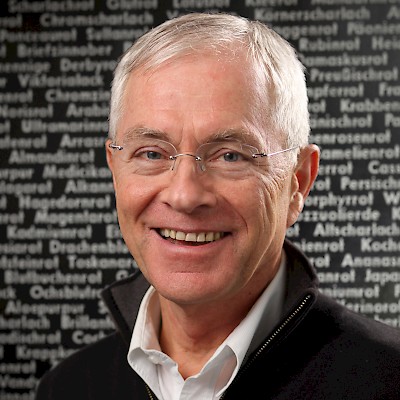László F. Földényi (1952) writer, essayist. From 1988 until 1991 he lived in Germany, Berlin, and from 2001 to 2002 he was invited as Fellow in Residence by the Netherlands Institute for Advanced Study in the Humanities and Social Sciences (Wassenaar). His books on literature, art and the history of ideas have been translated into different languages. He is the editor of the complete works of Heinrich von Kleist in Hungarian. His books won different literary prizes, among others the Blauer Salon Preis of the Literaturhaus, Frankfurt am Main (2002), the Friedrich Gundolf Prize of the Deutsche Akademie, Darmstadt (2005). In 2007 he received the highest state prize in Hungary, the Széchenyi Prize. He is member of the “Deutsche Akademie für Sprache und Dichtung”. He lives in Budapest, where he is professor and holds the chair of theory of art at the University of Theatre, Film and Television.

László Földényi
Vita
Fields of Research
Philosophy of art; history of literature and art; visual studies
Project outline
Biography Between Fiction and Truth
Is it a criterion of reliability in biographies that the author sticks to the facts? The biographer is supposed to use everything but his imagination. For him, facts are heavy as lead. However, the facts that are available to a biographer are not scientific: they are subject to change in opinions. In the world of socalled postfactuality often subject to the facts of the simulation. Documentary filmmaker Michael Moore said in his acceptance speech at the 2003 Academy Awards: »We like nonfiction and we live in fictitious times.« Moore’s thought also provides an explanation for both the popularity of the biography genre and the unreliability of many biographies. Already at the beginning of the nineteenth century, Thomas de Quincey complained about the genre of biography in the conventional sense; he claimed that it was »wearisome and useless« when a biography progressed chronologically and confined itself to the inventorylike enumeration of events. Rather, one has to represent the double character (»doubleness«) of life, which for De Quincey consists in the unity of outer and inner life. For this purpose, the biographer must penetrate with a kind of »deep hole« in the formative moments of each life and then show those »deep impressions,« which have shaped even more than the external impressions of the person’s life. These deep impressions are the most formative and the least visible. Regarding De Quincey's autobiography, Virginia Woolf wrote: »the art of biography ... is being transformed ... the slow opening up of single and solemn moments of concentrated emotion.«
Publications (Selection)
Melancholie (Matthes & Seitz, München,1988)
C. D. Friedrich: Die Nachtseite der Malerei (Matthes & Seitz, München,1993)
Abgrund der Seele: Goyas Saturn (Matthes & Seitz, München, 1994)
Ein Foto aus Berlin (Matthes & Seitz, München, 1996)
Heinrich von Kleist: Im Netz der Wörter (Matthes & Seitz, München, 1999)
Das Schweißtuch der Veronika. Museumsspaziergänge, (Suhrkamp, Frankfurt am Main, 2001)
Newtons Traum. Blakes Newton (Matthes & Seitz Berlin, Berlin, 2005)
Dostojewski liest Hegel in Sibirien und bricht in Tränen aus (Matthes & Seitz Berlin, Berlin, 2008)
Schicksallosigkeit. Ein Imre-Kertész Wörterbuch (Rowohlt Verlag, Reinbek bei Hamburg, 2009)
Starke Augenblicke. Eine Physiognomie der Mystik (Matthes & Seitz Berlin, Berlin, 2013)